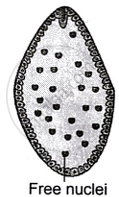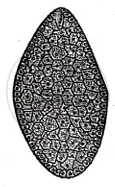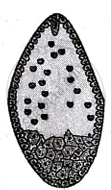Advertisements
Advertisements
Question
Describe the formation of helobial endosperm
Solution
Helobial type of endosperm:
a. It is an intermediate between nuclear and cellular type of endosperm.
b. First division of primary endosperm nucleus is followed by (division of cytoplasm) wall formation.
c. The wall formation results in the central cell being divided into a large micropylar and a small chalazal chamber.
d. In both the chambers the development occurs as seen in nuclear type.
e. This type is generally seen in Helobiae series of monocots, hence the name ‘Helobial Endosperm’.
APPEARS IN
RELATED QUESTIONS
Some organisms suspend their metabolic activities to survive in unfavourable conditions. Explain with the help of any four examples.
A non biology person is quite shocked to know that apple is a false fruit, mango is a true fruit and banana is a seedless fruit. As a biology student how would you satisfy this person ?
In which of the following the primary endosperm nucleus undergoes free nuclear division or karyokinesis?
At what stage of endosperm development, will you observe nuclear or cellular type of endosperm?
The endosperm of gymnosperms is ______.
Indentify the wrong statement regarding post-fertilisation development.
The cells of endosperm have 24 chromosomes. What will be the number of chromosomes in the gametes?
Why does the zygote begin to divide only after the division of Primary endosperm cell (PEC)?
The type of evolution where the central part is occupied by free nuclear and the peripheral part by cells is observed in ______.
The diagram given below shows the three types of endosperms in angiosperms.
 |
 |
 |
| Type 1 | Type 2 | Type 3 |
- Identify the three types of endosperms shown above.
- Name the type of endosperm which commonly occurs in polypetalous dicots.
